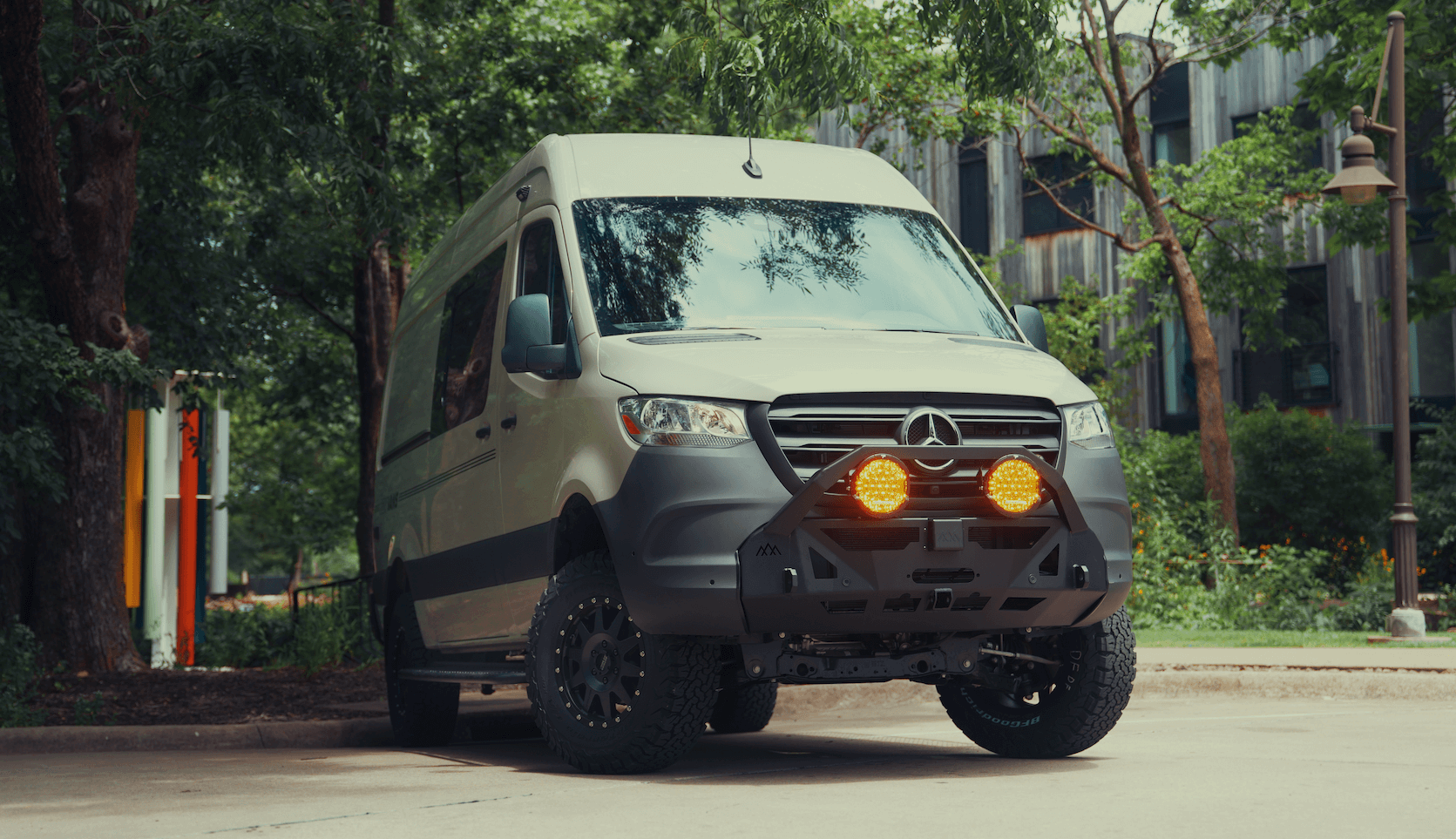Recreational Vans

Mountain travel exposes weak links fast. Long grades heat transmissions and brakes, thin air robs power, and tight, rutted forest roads demand traction and clearance. A custom modified van starts with the right platform for the job, then adds driveline, suspension, and interior systems that tolerate altitude, cold, and washboard without rattles or failures.
Common platforms include Mercedes Sprinter, Ford Transit, and Ram ProMaster. For steep or snowy routes, all wheel drive or four wheel drive with a usable low first gear is valuable. All terrain tires with a strong load rating and appropriate snow rating help with grip and sidewall protection. Clearance should be balanced with stability; mild lifts paired with tuned shocks and appropriate sway control keep the body composed on broken pavement.
Brakes and engine cooling matter on mountain descents. Fresh fluid, quality pads, and sufficient rotor mass resist fade. Downshifting with proper gearing saves brakes on long downhill runs. Under the hood, auxiliary cooling and well routed airflow prevent heat soak on slow climbs.
Reliable off grid power enables safe winter and shoulder season travel. Lithium batteries sized for altitude heating loads, solar to offset daily draw, and a high output alternator charger keep systems topped up even when weather shuts down panels. For heat, many travelers favor fuel fired heaters matched to elevation with proper venting and carbon monoxide monitoring. Insulation should pair thermal performance with moisture management to avoid condensation inside wall cavities.
Mountain vans carry bulky items. Layouts should protect skis, boards, bikes, climbing gear, and wet layers without invading living space. Consider a garage zone with drainable flooring, L track tie downs, and sealed compartments. Overhead cabinets need secure latches, and heavy items should ride low to keep the center of gravity planted on rough roads.
Stay within GVWR and axle ratings once fully loaded with people, water, fuel, and gear. Chain clearance, recovery points, and a real spare tire are basic mountain preparedness. Electronics like traction control and stability control still benefit from driver inputs such as gentle throttle, early braking, and careful line choice on rutted approaches.
Sound treatment and insulation set the tone for a quiet cabin on corrugations. Pair constrained layer damping on large panels with thoughtful insulation that does not trap moisture against metal. Vapor aware wall assemblies, sealed penetrations, and managed ventilation reduce frost and mildew risks when sleeping at high elevation.
Electrical systems should be simple to service. A clean main disconnect, labeled circuits, and robust wiring paths make trail fixes possible. Water systems need freeze mitigation such as interior tanks, insulated lines, and easy drain downs. Galley choices should consider altitude effects on cooking. Induction avoids combustion moisture; if using fuel, ensure proper ventilation and certified components.
Underbody protection like skid plates, rock rails, and diff protection can be worthwhile where access roads get rocky. Choose bumpers and racks that maintain approach, breakover, and departure angles instead of piling on weight without function. The best mountain vans keep mass low and secure so suspension and brakes can do their jobs.
Costs vary with platform, driveline, and systems. All wheel drive vans with quality suspension, power, and heat packages command higher budgets but pay off in confidence and comfort when the route points uphill. Timelines stretch because good work requires design, parts, and testing; plan around seasons if you want snow or summer trail access.
How to evaluate a shop:
Shoppers sometimes search mountain made vans still in business when comparing options. Treat any brand check as a reminder to verify current operations, read recent reviews, and confirm service availability near your routes. The goal is a partner that understands mountain conditions and stands behind the work.
If you want a purpose built cabin for high country travel, our team designs and builds complete custom vans with traction, suspension, power, and heat packages tuned for elevation and rough approach roads. We listen to your routes, gear, and season, then map layouts that secure bikes and boards, keep weight balanced, and stay quiet on washboards. Pick up is simple at our Fayetteville base, with time set aside to walk you through systems before you point the nose toward the hills.
Ready to see how a mountain focused layout comes together for your use case? Explore our Recreational Vans overview at Recreational Vans, then take a deeper dive into options and timelines at Custom Build Van. If you are evaluating financed platforms, review our Mainstream Vans page for guidance on book value friendly choices.
We build mountain vans that feel stable on the climb, calm on the descent, and comfortable when the wind picks up at the pass. Tell us where you are headed and what you need to carry, and we will turn that plan into a dependable custom van that is ready for the alpine.
Ready to build a mountain capable custom van with expert fit and finish? Tell us how you travel. We will spec traction, suspension, power, heat, and storage around your routes, then deliver a quiet, dialed cabin that works on day one. Start your build request now to secure a spot on our calendar.
ADDRESS:
6159 E Huntsville Rd, Fayetteville, AR 72701
PHONE:
(479) 326-9200
EMAIL:
info@ozkvans.com